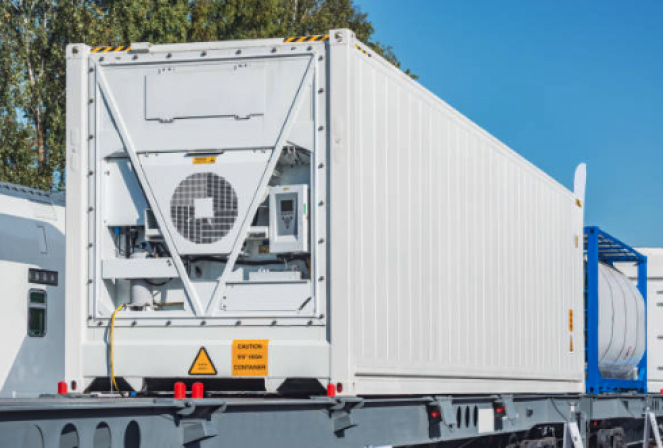Owner-Operator Truck Driver: 13 Tips To Saving On Fuel Costs
One of the most significant costs that owner-operators face is fuel. While it is not feasible to change fuel prices, it is possible to optimize fuel use. Here are some tips to reduce fuel costs and improve your bottom line.
1. Choose Your Truck Wisely
First and foremost, your choice of truck will impact your fuel costs. If you choose a truck with the heaviest engine and fancy chrome design, those features will weigh you down and increase fuel costs in the long run. Opt for an aerodynamic design to limit how much the truck’s weight increases the fuel use.
2. Opt for Extra Large Fuel Tanks
The larger your fuel tanks, the longer you can drive between stops and the more flexibility you have in choosing your fueling locations. Opt for a truck with larger fuel tanks to stock up on cheap fuel when available and reduce the number of stops needed.
3. Perform Regular Maintenance
Over time, normal wear and tear can take a toll on your truck. When parts are not performing at their best, they are less efficient and require more fuel. To optimize fuel efficiency and prolong the lifespan of your equipment, you must stay on top of maintenance needs. Leverage predictive maintenance technologies to schedule repairs conveniently and ensure your equipment is always in excellent condition.
4. Maintain Proper Tire Pressure
Low tire pressure creates resistance and uses more fuel. To get the best performance on the road, regularly check the air pressure in all 18 tires and fill them up to the manufacturer’s specifications. This way, your drives will be safer and more fuel efficient.
5. Add a Roof Fairing
If your truck is dragging in the wind, it is bound to use more fuel than absolutely necessary. If you do not have one already, consider getting a roof fairing. Roof fairings are relatively inexpensive and are known to increase mileage by maximizing the airflow as it passes over the truck. A fairing acts as a wind deflector, so the ride is quieter, and you can stretch your diesel even further.
6. Opt for Aluminum Wheels
Aluminum wheels are significantly more expensive than steel wheels, but there is a reason they are so popular. They dramatically reduce the weight of trucks. The lighter the truck, the lower the fuel requirements.
7. Track Your MPG
The best way to stay on top of your fuel usage is to keep a detailed record of your miles per gallon (MPG). If the rate starts to change from the usual fluctuations, figure out why. Some factors, like weather, may be outside your control, but if something needs to be fixed, it’s better to know sooner rather than later. Keeping track of MPG will help you stay in tune with your truck and keep costs down.
8. Find the Best Fuel Stops
Throughout a long haul, pump prices can vary widely. Furthermore, fuel taxes vary from state to state, so even if the pump price is lower, the cheapest fuel might be in the next state with the lower taxes. To find the best fuel stops:
Do your research ahead of time.
Plan the route and choose stops in advance.
Use technology to determine which stations have the best price.
Determine where and how much to fuel based on your MPG and diesel prices.
9. Rethink Your Route
Going the scenic route is a great choice, but it may not be the most fuel-efficient option. One of the best ways to limit fuel use is to run the most efficient routes strategically. Keep side trips to a minimum and choose routes that allow you to make the most of your diesel.
10. Slow Acceleration
A lead foot will increase fuel costs just as fast as it speeds up a truck. Chill out on the gas to save fuel, reduce engine wear, and prevent tire wear. Easing up on acceleration is essential, particularly on hills, because it helps keep fuel use under control.
11. Shift Wisely
If you only use horsepower to pull your load, you miss out on a powerful asset – torque. Pulling with torque, you sustain your speed without overworking the engine. While every engine varies, and it is important to check your owner’s manual, an excellent place to be is around 1250 to 1350 RPM.
12. Drive the Optimal Speed
Speedy travel has many benefits. It pleases freight brokers and shippers and helps you squeeze in more jobs. However, driving fast has its downsides, too. Driving over the optimal cruising speed of around 60 miles per hour decreases the truck’s fuel economy. Even slightly decreasing the highway speed can help measurably, and doing so only adds a few minutes to travel time.
13. Turn the Engine Off
Many owner-operators idle to keep climate control and accessories on at night. However, time spent idling is bad for the environment and bad for the bottom line. Idling uses approximately a gallon of fuel per hour. If diesel costs $4.29 a gallon, a 10-hour night of idling will rack up a $40.29 fuel bill. This may not seem like much, but it quickly adds up night after night. A more cost-effective option is to invest in an auxiliary power unit (APU) that will quickly pay for itself. In addition to saving on fuel costs and reducing emissions, an APU eliminates the excess wear and tear on the engine that is caused by idling for hours on end.
Owner Operator Truck Driver Careers
QFS Transportation is one of the best intermodal trucking companies offering intermodal trucking services throughout the United States. At QFS, our drivers come first– that is why our network of Owner Operators has an outstanding road-home balance, a dedicated support team and safety staff, and the experience needed to help our drivers succeed. QFS Transportation is always searching for experienced drivers across the entire nation. If you are interested in hauling for QFS, fill out our Driver Application or our Tractor Application.


